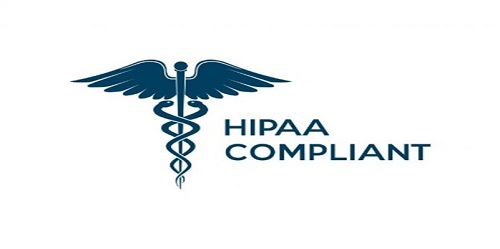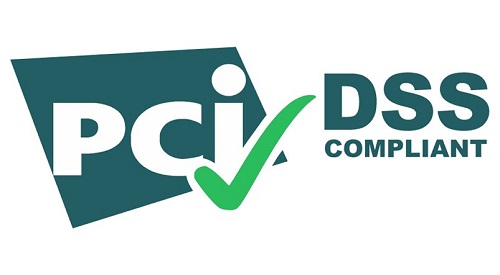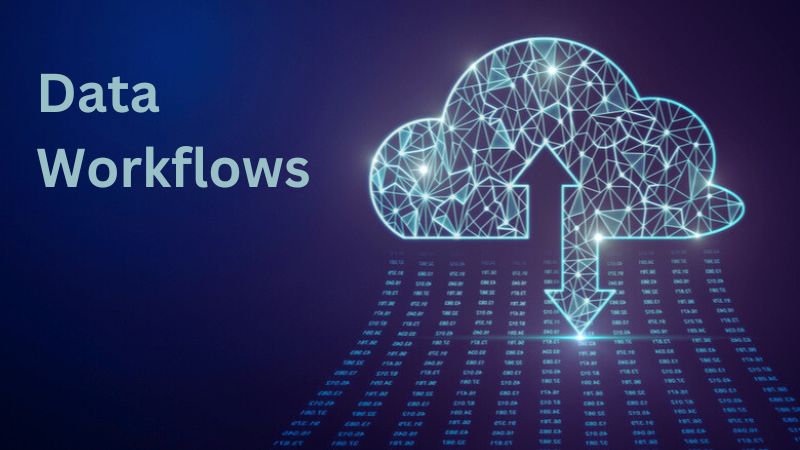Understanding Data Security in Cloud Data Warehouses
Firms and corporations can pool, manage, and control big data at the workstations very conveniently with cloud data warehousing. But with such convenience comes the owner to put up robust data security and comply with the data through any regulatory requirements. The following article will give more detail about how data security is compliant with the regulations in the cases of using cloud data warehousing consulting services. It has perspectives and best practices on how to keep your sensitive information safe.
Data security in the cloud data warehousing context is the security of data access without proper authority, misuse of the data, and general security from breaches, mostly on issues of integrity, confidentiality, and availability of the data.
Common security threats in Cloud Data Warehouses
1. Unauthorized Access: Hackers or malicious insiders gain unauthorized access to sensitive data.

2. Data Breaches: Unauthorized disclosure of sensitive information due to security vulnerabilities.
3. Data Loss: Accidental or intentional deletion or corruption of data.
4. Malware Attacks and Ransomware: In this, a malware attack is a malicious developed software or virus for attacking and invading the integrity of available data. Adding layers of protection can mitigate vulnerabilities such as those described in FortiManager CVE-2024-47575, where missing authentication led to the execution of arbitrary code in cloud management systems.

5. Insider Threats: Employees or contractors intentionally or unintentionally causing harm to data security.
Most of these risks are neutralized in their majority by the same or close characteristics, such as, for example, encryption, access control means, security audits timely, and training of employees, among others, in the awareness of the protection requirements.
Compliance Requirements for Cloud Data Warehouses
Organizations hosting their data warehouses in the cloud have to work within regulated frameworks, and more so if the industry deals with sensitive data such as healthcare, finance, or e-commerce.
Key Regulatory Frameworks
1. General Data Protection Regulation (GDPR): Protects the privacy and personal data of European Union residents.

Image: GDPR logo
2. Health Insurance Portability and Accountability Act (HIPAA): This is an act that provides security and privacy in the safeguarding of protected health information (PHI) in the health industry.

Image: HIPAA logo
3. Sarbanes-Oxley Act (SOX): Regulates financial reporting and corporate governance to prevent accounting fraud.
4. Payment Card Industry Data Security Standard (PCI DSS): Assurance of credit card information being handled securely to help safeguard against fraud and data breaches.

Image: PCI DSS logo
Non-compliance with these regulations can result in severe penalties, fines, and reputational damage for organizations.
Best Practices for Data Security in Cloud Data Warehouses
To ensure robust data security in cloud data warehouses, organizations should adhere to the following best practices:
Encryption
Implement encryption techniques to protect data at rest and in transit, including data encryption keys.
Access Controls
Enforce proper access controls, such as role-based access control (RBAC), and consider the use of multi-factor authentication (MFA) to ensure that access is only allowed to those who deserve it.
Regular Security Audits
Conduct security audits from time to time and carry out risk assessments, so that the possible vulnerabilities are identified, and adhere to the standards in security.
Data Anonymization and Data Masking
This sensitive data could be anonymized or masked if needed, so as not to allow access to unauthorized people and at the same time remain utilizable for analytics and reporting. To further enhance security, a decentralized private network could distribute the data, ensuring protection and minimizing unauthorized access.
Training of Employees
The employees should be briefed properly about the policies and practices for best security, which includes handling of data, management of passwords, and means of phishing. Organizations can follow these best practices to improve their data security posture and neutralize potential risks.
Strategies for Ensuring Compliance in Cloud Data Warehouses

The public cloud forces the organization to incorporate a compliance approach following the regulations of the industry to which the organization belongs. Key strategies are:
1. Data Governance Policy
Develop data governance policies to ensure the quality, integrity, and regulation of implemented data. With a dedicated proxy, you can enhance data security by routing traffic through a private server, providing greater control and protection over sensitive information.
2. Categorize and Tag
Categorize data according to their sensitivity and tag the data with a visible indicator to facilitate easy control of access and compliance monitoring.
3. Data Retention Policies
Managing the data according to requirements defined by the regulations and depending upon requirements and business needs.
4. Auditing and Monitoring Tools
Auditing and monitoring tools are to be a must thing tracing all activities within the users so that it does not let any anomalies in compliance with the security policies.
5. Working on Legal and Compliance
This position will work closely with IT in observing organizational legal requirements with much efficiency and speed in their responses as they arise.
Those respective organizations practicing this strategy in managing their data will enable it to drive a cultural compliance objective, which will also bring down the risk of not facing those lawsuits.
Resilience and Disaster Recovery
Among important factors in assuring the highest level of data security and continuity of the system in cloud-based warehouses are resilience and disaster recovery. This may involve:
Backup and Replication
This is meant to refer to the periodic data backup and replication of the same to distributed locations for redundancy, ensuring that the data will be available under hardware failure or outage scenarios.
Disaster Recovery Planning
Inclusive plan giving ideas on what is to be done in case some occurrences take place, such as data breaches and natural calamities.
High Availability Architecture
Design with the highest availability possible by deploying multiples of every component and failovers.
Data Encryption
The data should be encrypted both at rest and during communication, carried out with strong algorithms and well-defined protocols of key management.
Disaster Recovery Testing
The plan should be tested time after time through different simulated exercises to identify the weaknesses in the plan. They should be in a position to ensure there is not only a quick recovery from unforeseen occurrences but also a smaller percentage of downtime and data loss by a big margin.
Future Trends in Data Security and Compliance
As technology evolves, several trends are shaping the future of data security and compliance in cloud data warehouses:
- These include emerging technologies, for example, homomorphic encryption and secure multi-party computation.
- On the other side, regulations will have to become stricter in their scrutiny of how to handle data within the ever-changing regulatory landscape.
- Security monitoring, threat identification, and compliance management are being done more and more with automation and artificial intelligence (AI).
Implementing Data Security and Compliance in Practice

To effectively implement data security and compliance in practice, organizations should follow these steps:
- Develop an integrated security and compliance strategy aligned with regulatory requirements and industry best practices.
- Select a reliable cloud data warehouse provider with robust security features and compliance certifications.
- Train employees on security best practices, data handling procedures, and regulatory requirements.
- Continuously monitor and update security measures to address emerging threats and compliance changes.
Table: Comparison of Encryption Methods
| Encryption Method | Description | Advantages | Disadvantages | Suitable Use Cases |
| Symmetric Encryption | Uses a single key for encryption/decryption | Fast, efficient | Key management complexity | Secure data transfer, large datasets |
| Asymmetric Encryption | Uses public/private key pair | Secure key exchange, digital signatures | Slower, computational overhead | Secure communication |
| Hybrid Encryption | Combines symmetric/asymmetric techniques | Efficient data transfer | Complexity, performance overhead | Secure communication |
| Homomorphic Encryption | Allows computation on encrypted data | Secure computation, privacy-preserving analytics | Computational overhead, limited support | Secure outsourced computation, privacy-preserving data analysis |
| Quantum Encryption | Utilizes principles of quantum mechanics | Highly secure, resistant to quantum attacks | Requires specialized hardware, limited practical implementation | High-security environments, future-proofing against quantum attacks |
| One-Time Pad | Each plaintext bit is encrypted with a corresponding random key bit | Unbreakable if used correctly | Key distribution challenge, impractical for large datasets | Extremely sensitive data, military communication |
Common Challenges and Solutions
1. Challenges
- Integration Issues: Despite the above benefits, the cloud data warehouse requires integration into the existing organizational systems and tools. The process usually becomes hard and complex, posing issues of incompatibility and data migration.
- Lack of Skills: Most organizations tend to lack the skills or resources required in many cases for sufficient data management on security and compliance.
2. Solutions
- Training: Offer comprehensive training programs that will sensitize staff about the best standards that should be adhered to in issues such as security of data, requirements for compliance, and how the tools and technologies offered should be used.
- Automation Tools: Automate the workflow of security and compliance through better automation toolkits, which will reduce manual tasks to 85% and thereby ensure proper management of data security and compliance.
- Considerations in Outsourcing: Among the various factors to be considered in outsourcing, one is to consider outsourcing some services, such as audit and monitoring of compliance, with a third-party vendor or managed service provider specializing in data security and compliance.
Case Studies
Case Study-1: Data Security Implementation at Company X
Except for a few, Company X was a brand name in the e-commerce retailing business. Many times, however, they were found to grapple with the issue of data security for their customers within the four walls of their cloud data warehouse. They did this by having robust encryption mechanisms, and access controls, and through conducting regular security audits. This has ensured they become GDPR compliant, and hence trust in their data handling practices by customers will further increase.
Case Study-2: Compliance Challenges for Company Y
Company Y is in the line of healthcare services. In this kind of business, they have quite some hardships keeping up with the stipulations in the HIPAA requirements. Data for health is complex, and stiff securities are required for the data. The adoption of the governance policies of data, covering encryption and training of employees, covered the detected gaps in compliance, hence increasing the security data posture.
Conclusion
Organizations have it in place to ensure that their data, sensitive and very much complying with the warehouse, is in the cloud. This may require building and establishing the credibility of customers at the same time, keeping them maintained according to the required regulations. This is just the kind of measure, from strong security to regulatory requirements and the use of emerging technologies, companies shall use to protect their data assets. Do remember, these are the measures adopted today. Perhaps, they are the very things that will save you from expensive breaches and non-compliance penalties tomorrow.
Frequently Asked Questions (FAQs)
1) What are the primary security risks associated with Cloud Data warehousing?
Some of the security risks that basic data warehousing in the cloud involves are data breaches, access without proper authority, and loss of data from malware attacks.
2) How can encryption help in ensuring data security in Cloud Data Warehouses?
Encryption is the assurance that data is safe, in other words, changing data to be accessed in a safe format using the right decryption key, hence preventing unauthorized personnel from entering and leakage of information.
3) What steps can organizations take to maintain compliance with Data Regulations?
Organizations should be able to remain within the fold of compliance by adopting stringent security measures, exercises about assessments of compliance, and changes and specifications in regulations to remain abreast of them.
4) How often should compliance assessments be conducted?
The compliance could run such periodic regular checks annually or biannually, which would pick the prevailing gaps or vulnerabilities, and respond to the same.
5) What are the consequences of non-compliance in Cloud Data Warehousing?
Inability to comply with such data regulations not only attracts financial penalties but also legal actions, which will also cause reputation and customer trust damages, all these in totality a huge burden to the bottom line of the organization.



